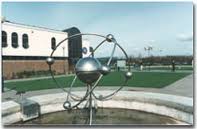Originally called Windscale, the nuclear site was renamed as Sellafield by BNFL in 1981, in what was considered to be a vain attempt to improve its poor public image after a string of accidents. A famous cartoon in the Guardian+ newspaper shortly after the Chernobyl nuclear accident showed one nuclear scientist from the former Soviet Union saying to another: “We have sought advice from the United Kingdom and they suggest we change the name.”
The Windscale site was first cleared in 1947 for the building of two military plutonium production reactors, ‘the Windscale Piles’, which reproduce plutonium for Britain’s first atomic bomb. The two contaminated 400-foot chimneys, now being dismantled, still dominate the Sellafield site.
The worst accident took place in 1957 when Pile No 1 caught fire, leading to a major release of radioactivity into the environment, contaminating grassland to the extent that the Government introduced a ban on the consumption of milk within a 200 square mile area around the plant. The radioactive plume also spread to Europe. Although the authorities insisted at the time that no one would be harmed, the National Radiological Protection Board admitted in 1983 that the radioactive iodine released could ‘in theory’ cause 260 thyroid cancers, 33 of them fatal. A commemorative plaque has been placed at the perimeter fence by CORE.
Today, Sellafield leads the world in only one aspect of civil nuclear power – pollution. For nearly 50 years it regularly and deliberately discharged more radioactivity into the environment than any other country, and Windscale’s discharges have often been greater than those from all the rest of the world’s nuclear plants put together.
BNFL’s Visitor Centre and Public Relations
The revamped Visitor Centre, costing over £5m of public money was opened in summer 1995. Sellafield and its operational role were described in the Centre’s pre-opening publicity as being “a sort of health farm for atoms” BNFL admit the centre was based on the ‘Walt Disney’ approach – aimed very largely at young children who certainly appreciate the hands-on exhibits, the flashing lights and noise levels that would do justice to any rave party.
For those visitors who genuinely want to learn about Sellafield there is little in-depth information.
 From the comments book at the reception desk, disenchantment with the new centre was clear. “Unbelievably dreadful” from a teacher who vowed never again to bring her class, as well as the comment “high on theatricals , low on science”, which sums it up in one. The comments book has since been withdrawn.
From the comments book at the reception desk, disenchantment with the new centre was clear. “Unbelievably dreadful” from a teacher who vowed never again to bring her class, as well as the comment “high on theatricals , low on science”, which sums it up in one. The comments book has since been withdrawn.
A BNFL education pack came under fire from the National Consumer Council who described it as “nothing more than classroom commercials”. The pack, designed to teach primary school children about energy and the environment compared the Chernobyl disaster to a household accident and glossed over the dangers of nuclear power and nuclear waste problems.